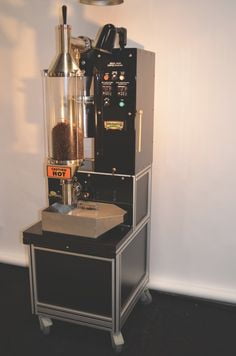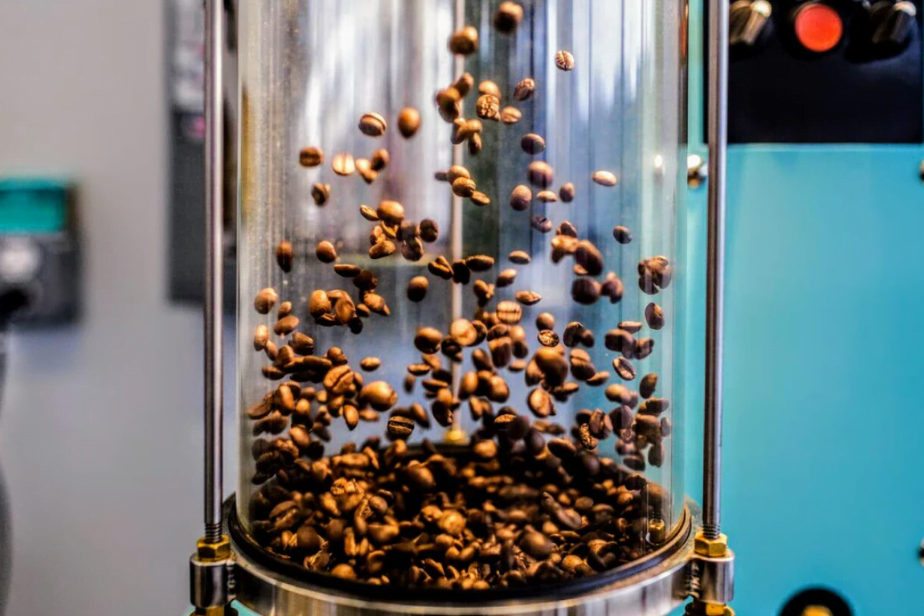Fluid bed coffee roasting is a coffee bean roasting technique that involves forcing hot air through a fluidized bed of coffee beans. This process results in uniform and consistent coffee beans by uniformly dispersing heat and providing a consistent roast. A smooth and evenly roasted coffee is the consequence of the fluidized bed’s swirling action, which uniformly distributes heat and keeps the beans from burning.
Types of Fluid bed coffee roasting
Oil-based roasting:Roasting using hot oil as a base: In this technique, coffee beans are roasted using this base. This produces a roast that is consistent, even, and smooth in texture.
Water-based roasting:Coffee beans are roasted using a water-based process in a rotating drum that is partially filled with water. The water aids in temperature control and guards against overheating the coffee.
Air roasting: The coffee beans are roasted using hot air in the air roasting process, which is a dry roasting technique. This technique is renowned for generating a roast that is clean, bright, and uniform with little oil content.
Infrared roasting: This process quickly and evenly roasts the coffee beans by heating them with infrared radiation. This method of roasting produces a consistent, uniform roast and is frequently employed for high-volume production.
Microwave roasting: In this technique, coffee beans are heated and roasted using microwave energy. Although this approach is quick, the uneven distribution of heat frequently leads to an inconsistent roast.

How to use???
Heat up the roaster: The roaster needs to be heated up, so turn it on and give it some time to reach the desired temperature. Normally, this takes ten to fifteen minutes. Prepare the coffee beans : Cleaning and removing any flaws from the coffee beans is the first step in preparation. The coffee beans should next be weighed and left aside.
Load the beans:Coffee beans should be loaded into the roaster’s hopper.
Start the roast: Turn on the fan to make a fluidized bed of coffee beans before beginning the roast. The beans will move about and cook uniformly.
Adjust temperature and time: Temperature and roasting time should be adjusted in accordance with the desired level of roasting. While a deeper roast could take up to 15 minutes, a lighter roast typically cooks in 8 to 10 minutes.
Monitor the roast: As the coffee beans roast, keep an eye out for color changes and the first and second crack. The interior temperature of the beans can be checked using a thermometer.
Stop the roast: When the roast has reached the desired level, cease it by turning off the fan. The roaster’s bottom will eventually receive the coffee beans.
Cool the beans:Quickly move the freshly roasted coffee beans to a cooling tray to put an end to the roasting process and let them cool.
Store the beans: After cooling, move the coffee beans to an airtight container and keep them there until you’re ready to use them.

why should we use? fluid bed coffee roasters???
Consistency: Every batch of coffee beans is roasted to the same level because to fluid bed coffee roasting’s consistent and uniform roasting. This is crucial for speciality coffee roasters who want to keep their coffee blends’ flavor profiles consistent.
Efficiency: Fluid bed roasters may roast coffee beans more quickly than conventional drum roasters, which saves time and energy. This may result in lower operational expenses for coffee roasters.
Quality: Fluid bed roasting produces a higher-quality roast that keeps the flavor and aroma of the coffee beans intact since it heats up quickly and consistently. The final coffee product’s flavor and quality may improve as a result.
Increased production: Larger batches of coffee beans may be roasted at once with fluid bed roasting, increasing the capacity of coffee roasters.
Improved environmental sustainability: Fluid bed roasters often use less energy than conventional drum roasters, which helps reduce carbon emissions and other effects of coffee roasting on the environment.


